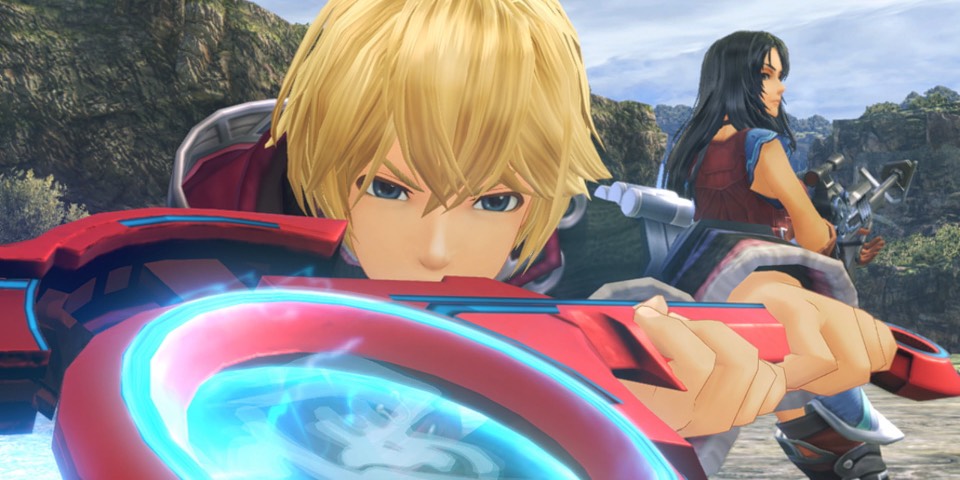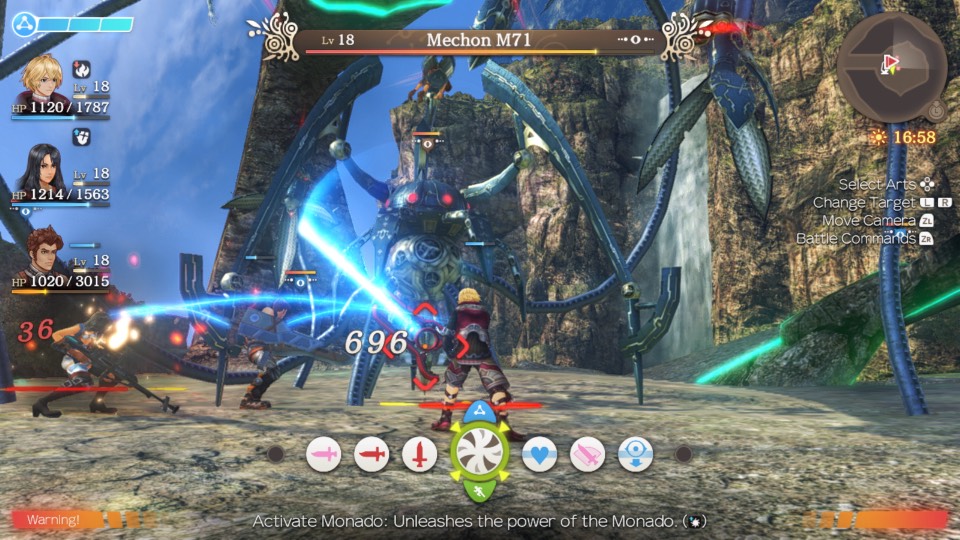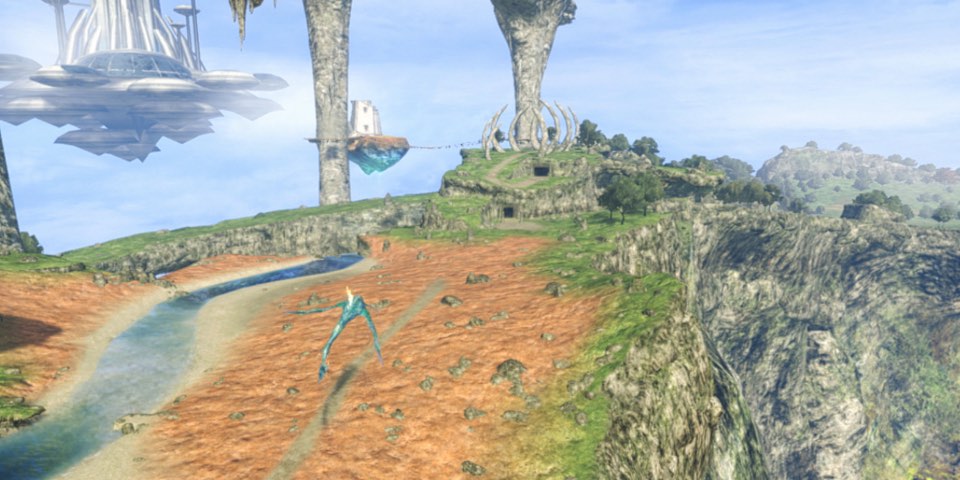
Xenoblade Chronicles: Definitive Edition Review
Back to the Future Connected
by Dominic LeightonThe validity of game narratives is rarely better proven than by the medium’s original long-form adventure; the JRPG. Over the years, these epic tales have sucked in players for hundreds of hours, via a carefully tuned mix of exploration, exposition and character levelling. Lots and lots of character levelling.
Xenoblade Chronicles is amongst the best JRPGs of all time, but the fact that it appeared as a Nintendo Wii exclusive has always made it something of an outlier for RPG fans. Given the recent success of its sequel, Xenoblade Chronicles 2, and its companion prequel Torna – The Golden Country, now though seems to be the perfect time for it to return.
Definitive Editions can be wishy-washy affairs, a game’s visuals typically given a resolution bump that’s designed to separate the most ardent fans from their money a second, third, or even fourth time. That’s not the case with Xenoblade Chronicles: Definitive Edition. Beyond a huge visual upgrade, the audio has been remastered, the gameplay re-tuned, and they’ve added Future Connected; an extensive epilogue. This is anything but a heartless cash-in.
For a game that’s been released on the Wii and the New 3DS, some players will be coming into it for at least the third time, but like sitting down with old friends, you settle down for a few minutes and they become hours. Telling the tale of Shulk and the mystical Monado blade, it’s a narrative that through all of its twists and turns, manages to be both bombastic and dramatic while remaining moving and heartfelt.
It’s ably assisted by the incredible world that it takes place in. Taking place across the Bionis and the Mechonis – the dead remains of two hulking titans – it’s a setting that’s evocative and memorable. Journeying from the Gaur Plains to the fallen arm of the Mechonis, it never fails to create wonder, and in the Definitive Edition, it’s never looked better.

The improvements to the visuals are incredible. Compared to the Wii original, it’s impossible not to be impressed by the improved character and enemy models, the vibrant colours, and the gorgeous setting. The underpowered Wii never truly did justice to the entire package, the muddy visuals and woeful facial features leaving you to fill in a few of the gaps with your own imagination. That’s simply not the case here, and you get the real sense that this is the true vision that Monolith Soft had for the game.
Besides the most obvious improvements, there have been a number of quality-of-life additions that make the Definitive Edition that much more enjoyable to play. Tutorials have been given a brush up, and the combat UI now benefits from indicators that show whether positional attacks, those stronger from the side or behind, are going to hit correctly.
There’s also Casual Mode, which drastically reduces the difficulty and lets you just enjoy the story. It’s handy when Xenoblade Chronicles is often capable of creeping up on you and destroying your squad, thanks to the series trope of letting high level enemies roam the lands from the very beginning. It’s more like an assist mode, retaining the spirit of the game without really diminishing it, and can be handy when you’re trying to level up to overcome a particular section.
The Expert Mode, which lets you take control of the way EXP is doled out between your team, similar to the Bonus XP system from Xenoblade Chronicles 2, feels less than necessary.

My personal favourite tweak is now having layered armour. The original game saw you consistently running around in a vile hodge-podge of armour that could often look like you’d attended some fantasy car-boot sale, sometimes choosing things that were less effective just because they looked better. Now you can choose your loadout and then your visual appearance, so Shulk gets to look like, well, Shulk, rather than some sword-wielding hobo.
Perhaps the biggest draw for returning players is the promise of Future Connected, a fully featured epilogue set one year after the events of the main game, taking Shulk, Melia and the Nopon siblings Nene and Kino on a new adventure. Taking place in a new area, the Bionis’ shoulder, it’s an all-new addition to the original game’s narrative, set after the game’s climatic finale.
It doesn’t carry the same sense of drama that the main storyline does – I don’t see any real way that it could have done – but it gives players more time in the company of Shulk and Melia, while providing more context to the main narrative and a glimpse of the Chronicles world in its aftermath. The Bionis’ Shoulder is an impressive region with high-reaching cliff faces and arches, and sheer drops into the clouds below, similar to Xenoblade 2’s opening area.

Future Connected doesn’t just bring a new storyline to the Chronicles experience, it has at least one or two new tricks up its sleeve. One of those includes the Ponspectors, a batch of Nopon surveyors who’ve been sent out across the shoulder in an effort to chart it, and who you need to check up on.
There’s red, blue and yellow teams to find, with the promise of a new kind of special attack – one that proves to be invaluable – to reward your efforts if you find enough of them. Besides that, they can help you out in battle too, if the need should arise, buffing your attacks or occasionally wading in themselves. It is another pleasant diversion, and a further reason to meander through the beautiful world, though not everybody will enjoy the extra Nopon-ness of the childlike creatures.
There’s an obvious reason why the Bionis Shoulder area didn’t make the original cut, and that’s performance. Xenoblade Chronicles targets 30fps, and mostly achieves it, but Future Connected is far more prone to dip below it.
Just as with Xenoblade Chronicles 2, there’s a dynamic resolution in order to help the game to run as smoothly as possible when pushed by huge, expansive landscapes or multiple enemies. It’s not native resolution to begin with either, often looking fuzzy when docked and downright blurry when handheld. It feels as though Monolith Soft should have nailed 30fps, and at least a consistent 720p when docked, but they sadly miss both marks.

It doesn’t diminish the experience, the gameplay or the story, and it’s still a giant leap over the Wii version. It’s just mildly disappointing that there are any concerns here, when the rest of the package is so outrageously good, and especially when they’re issues that have been hanging around the franchise throughout their time on Nintendo’s consoles.
| Summary |
|---|
| Xenoblade Chronicles: Definitive Edition is a generous and inspiring remaster, finally bringing the game’s visuals in line with its outstanding narrative. It truly feels like this is now the game Monolith Soft always intended it to be, cementing its position as one of the greatest RPGs of all time. |
| Good • A complete overhaul and enhancement of the game's visuals • New gameplay options for beginners and veterans • Future Connected is a sizeable epilogue • Layered armour! | Bad • Dynamic resolution struggles just as XC2 did • Future Connected is most prone to frame rate dips | 9 |